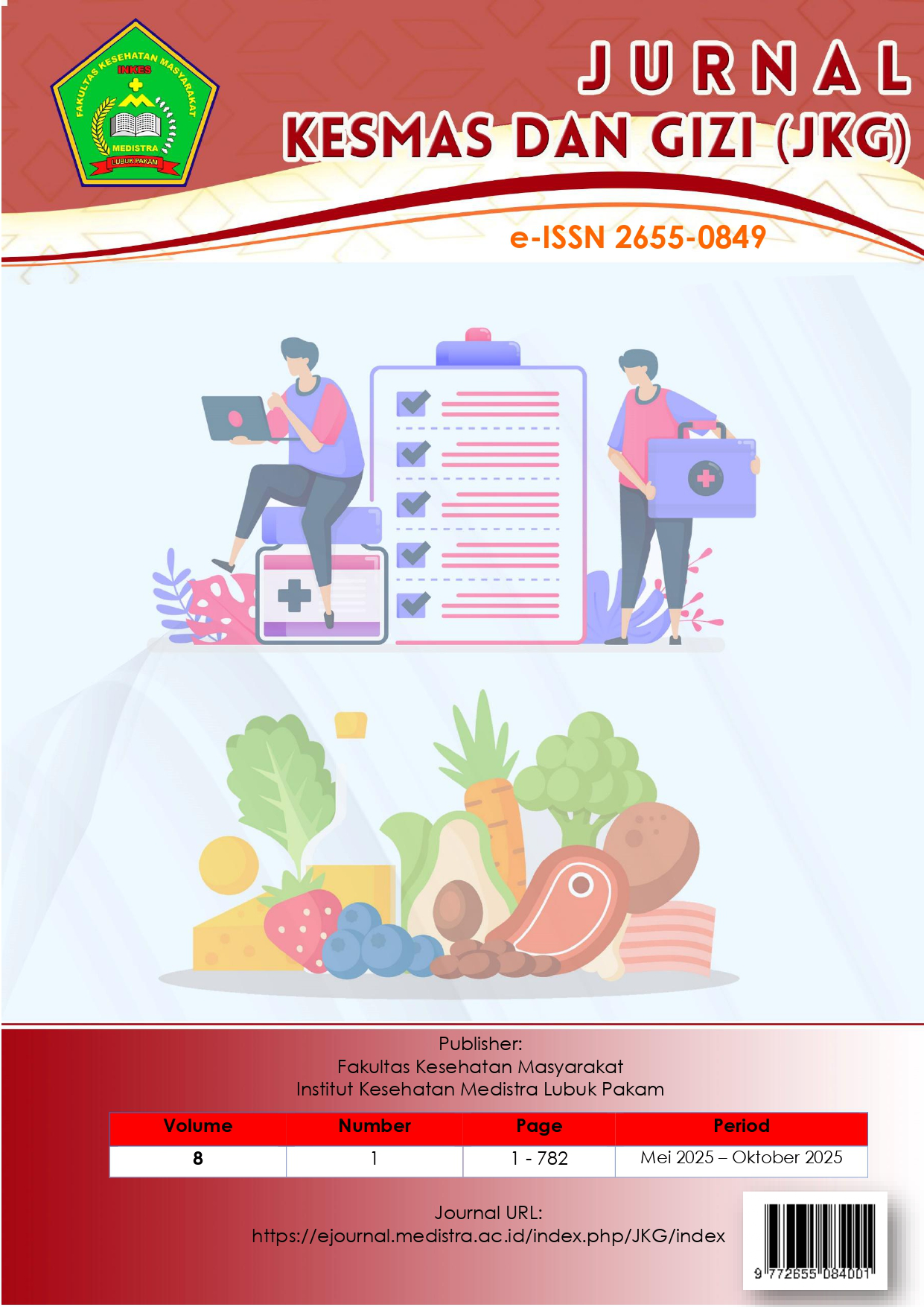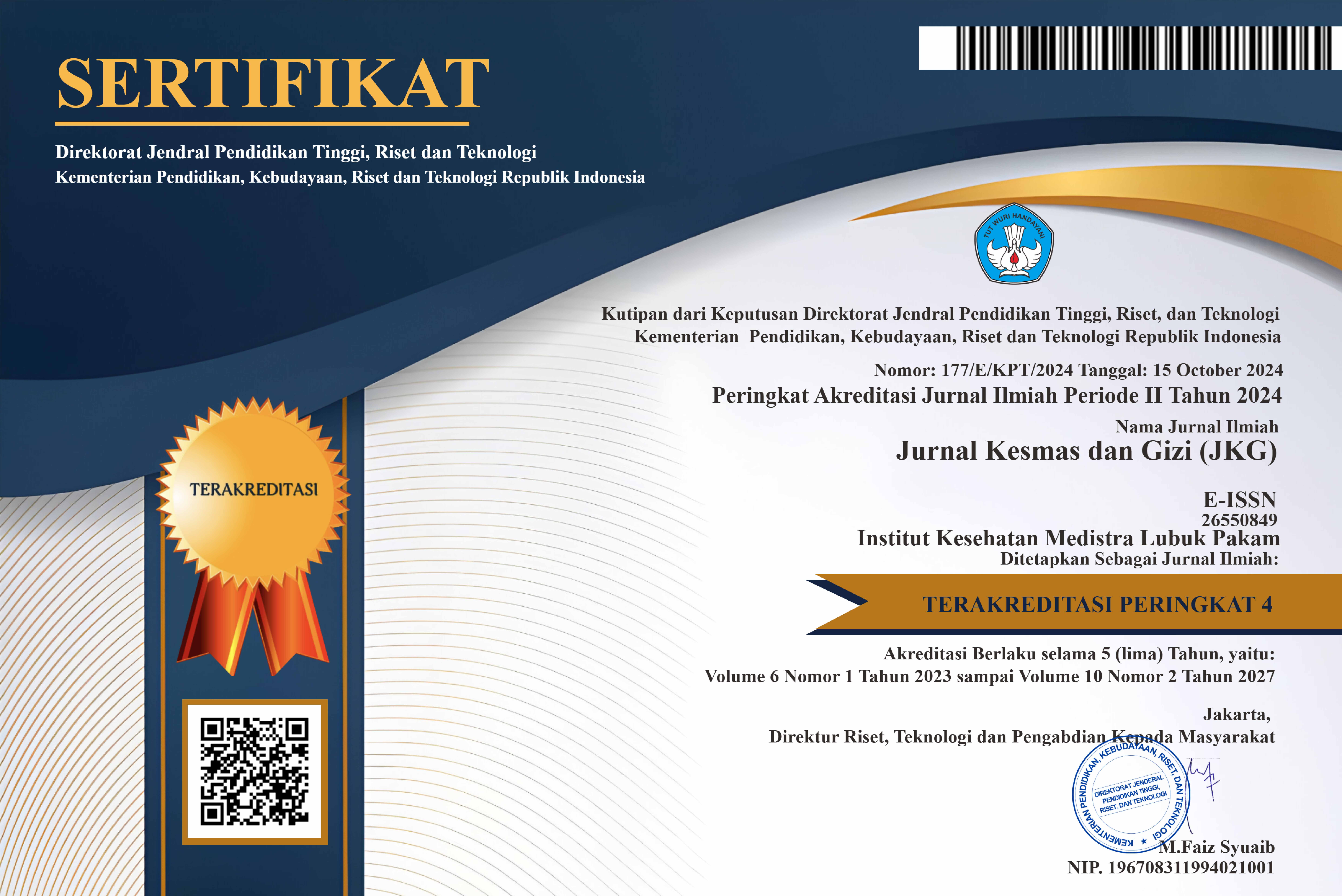Preparedness of the Medan Center for Quarantine and Health (BBKK) in Preventing and Controlling New Emerging Diseases and Potential Epidemic Infectious Diseases at Belawan Port
DOI:
https://doi.org/10.35451/80n17j04Keywords:
emerging , new diseases, preparednessAbstract
In recent decades, the world has witnessed the emergence of various infectious diseases that have had serious impacts on global public health. One institution that plays an important role in preventing the spread of infectious diseases across countries is the Balai Besar Kekarantinaan Kesehatan (BBKK). This research aims to provide an in-depth picture of BBKK Medan's preparedness in preventing new diseases and potential outbreaks of infectious diseases. This research uses a qualitative approach. The research informants were the Head of BBKK Medan, head of team II, functional entomologist, functional epidemiologist of BBKK Medan. The selection of informants was carried out using a purposive sampling technique. The research results show that BBKK Medan implements several strategic steps in preventing and preventing new diseases and potential outbreaks of infectious diseases, namely: carrying out routine evaluation monitoring, increasing human resource capacity, cross-sector coordination, implementing health protocols, carrying out vector prevention, conducting surveillance, and increasing public awareness. The obstacles faced by BBKK Medan in carrying out health quarantine duties are a shortage of experts who have special competence in the field of quarantine, low compliance with procedures, limited equipment and high human mobility. Factors that influence the success or failure of efforts to prevent and control infectious diseases at BBKK Medan include the availability of an adequate budget, clear and consistent regulations, effective cooperation or coordination between government agencies and related institutions. Strategies that can increase the effectiveness and preparedness of BBKK Medan are by carrying out strict supervision at country entry points, increasing human resource capacity, increasing cross-sectoral coordination, using the latest technology, strengthening community-based surveillance. It is recommended that BBKK Medan increase the effectiveness of controlling infectious diseases through implementing an integrated surveillance system at country entry points
Downloads
References
[1] Kementerian Kesehatan RI. (2018). Undang-Undang Nomor 6 Tahun 2018 tentang Kekarantinaan Kesehatan. Jakarta: Kementerian Kesehatan RI.
[2] Kementerian Kesehatan RI. (2023). Undang-Undang Nomor 17 Tahun 2023 tentang Kesehatan: Kementerian Kesehatan RI.
[3] Setiawan, A., & Hidayat, S. (2019). Tantangan dalam pelaksanaan kebijakan kekarantinaan di Indonesia. Jurnal Kesehatan Masyarakat, 15(2), 123 132.
[4] Fauzi, R., Budi, S. A., & Wulandari, S. (2021). Kesiapsiagaan Balai Besar Kekarantinaan Kesehatan dalam Menangani Penyakit Zoonosis di Sumatera. Jurnal Kesehatan Masyarakat, https://doi.org/10.1234/jkm.2021.01503 15(3), 102-109.
[5] Tan, S. H., Lim, T. S., & Hwang, S. Y. (2020). Pemanfaatan Teknologi dalam Kesiapsiagaan Karantina Kesehatan di Indonesia. Jurnal Teknologi Kesehatan, 9(1), 30-38. https://doi.org/10.1016/j.jtech.2020.09.004
[6] Setiawan, A. F., Iskandar, F., & Mahardika, D. (2022). Tantangan dalam Implementasi Kebijakan Kekarantinaan Kesehatan di Indonesia. Jurnal Kesehatan Global, 18(2), 45-59. https://doi.org/10.5678/jkg.2022.01802
[7] Creswell, J. W. (2014). Research design: Qualitative, quantitative, and mixed methods approaches (4th ed.). SAGE Publications.
[8] Dinas Kesehatan Provinsi Jawa Timur. (2020). Panduan pengawasan penyakit menular di tingkat provinsi dan kabupaten/kota. Dinas Kesehatan Provinsi Jawa Timur.
[9] Kementerian Kesehatan Republik Indonesia. (2019). Peningkatan kapasitas sumber daya manusia kesehatan dalam menghadapi wabah penyakit menular. Kementerian Kesehatan Republik Indonesia.
[10] Sulaiman, A. K., & Hassan, N. S. (2019). Enhancing healthcare workers' capacity for emergency response. Journal of Public Health Management and Practice, 25(2), https://doi.org/10.1097/PHH.0000000000000962 156-163.
[11] World Health Organization (WHO). (2021). Preparedness and response to public health emergencies. World Health https://www.who.int/publications/i/item/9789240051183 Organization
[12] Bennett, S. N., & Farrington, J. A. (2021). Intersectoral collaboration in health emergencies: A review of global best practices. Global Health Action, 14(1), 188-198. https://doi.org/10.1080/16549716.2021.1884445
[13] Lee, D. W., & Goh, A. B. (2022). Multisectoral collaboration for emerging infectious disease control: Lessons from past epidemics. International Journal of Infectious Diseases, https://doi.org/10.1016/j.ijid.2021.05.015 108, 76-83.
[14] Kementerian Kesehatan RI. (2020). Laporan Tahunan Direktorat Jenderal Pencegahan dan Pengendalian Penyakit. Jakarta: Kementerian Kesehatan RI.
[15] Balai Besar Kekarantinaan Kesehatan Makassar. (2022). Update Strategi dan Kegiatan Kekarantinaan Kesehatan di Indonesia. Diakses dari bbkkmakassar.kemkes.go.id
[16] Dwirusman, C.G. (2020). Peran dan Efektivitas Masker dalam Pencegahan Penularan Corona Virus. Jurnal Medika Hutama.
[17] Lee, H., & Ko, Y. (2021). Vector monitoring in disease surveillance: An essential step in controlling vector-borne diseases. Journal of Vector Borne Diseases, 58(2), 123-130.
[18] Harris, E., & Gupta, R. (2020). Environmental control measures for vector-borne diseases. The Lancet Infectious Diseases, 20(8), 1085-1091.
[19] Chandra, R., & Arora, P. (2021). The role of insecticides in vector control: Lessons from the past and future directions. Pest Management Science, 77(9), 3696-3703.
[20] World Health Organization. (2014). Early detection, assessment and response to acute public health events: Implementation of Early Warning and Response with a focus on event-based surveillance. Geneva, Switzerland: World Health Organization.
[21] Kementerian Kesehatan Republik Indonesia. (2017). Panduan Surveilans Kesehatan. Jakarta, Indonesia: Kementerian Kesehatan Republik Indonesia.
[22] Heymann, D. L. (2015). Control of Communicable Diseases Manual (20th ed.). Washington, DC: APHA Press.
[23] Kementerian Kesehatan Republik Indonesia. (2024). Meningkatkan kualitas kesehatan masyarakat melalui pencegahan penyakit. Badan Kebijakan Pembangunan Kesehatan.
[24] Mansa, G., Faidiban, R., & Mustamu, A. C. (2022). Efektivitas media audiovisual dalam meningkatkan kepatuhan pelaksanaan protokol kesehatan pencegahan COVID-19 pada siswa sekolah dasar. Al-Madrasah: Jurnal Ilmiah Pendidikan Madrasah Ibtidaiyah, 6(2), 378–382. JURNAL.STIQ AMUNTAI.AC.ID
[25] Putra, R., Supriyadi, D., & Wulandari, T. (2020). Evaluasi kepatuhan prosedur kekarantinaan di Indonesia: Studi kasus di beberapa BBKK. Jurnal Kesehatan dan Keselamatan, 12(1), 67-75.
[26] Rahmawati, I., et al. (2021). Dampak mobilitas manusia terhadap upaya pengendalian penyakit menular di Indonesia. Jurnal Epidemiologi Indonesia, 30(3), 250-260.
[27] Susanto, H., Nugroho, A., & Prasetyo, B. (2018). Ketersediaan peralatan dan dampaknya terhadap efektivitas kekarantinaan di bandara. Jurnal Ilmu Kesehatan, 20(1), 45-55.
[28] Rahmawati, I., et al. (2021). Koordinasi antar instansi dalam upaya pencegahan penyakit menular: Studi kasus di BBKK Medan. Jurnal Kebijakan Kesehatan, 8(3), 112-120.
[29] Sari, D., & Nugroho, A. (2019). Analisis dampak ketersediaan anggaran terhadap keberhasilan pengendalian penyakit menular di BBKK Medan. Jurnal Manajemen Kesehatan, 10(1), 15-25.
[30] Suharto, M., & Darmawan, A. (2022). Evaluasi sistem pengawasan di pintu masuk negara dalam mencegah penyebaran penyakit menular. Jurnal Kesehatan Global, 12(2), 90-102.
Downloads
Published
Issue
Section
License
Copyright (c) 2025 Paulus Manurung, Otniel Ketaren, Jasmen Manurung, Kesaktian Manurung, Mido Ester Sitorus

This work is licensed under a Creative Commons Attribution 4.0 International License.
Copyright in each article is the property of the Author.


























